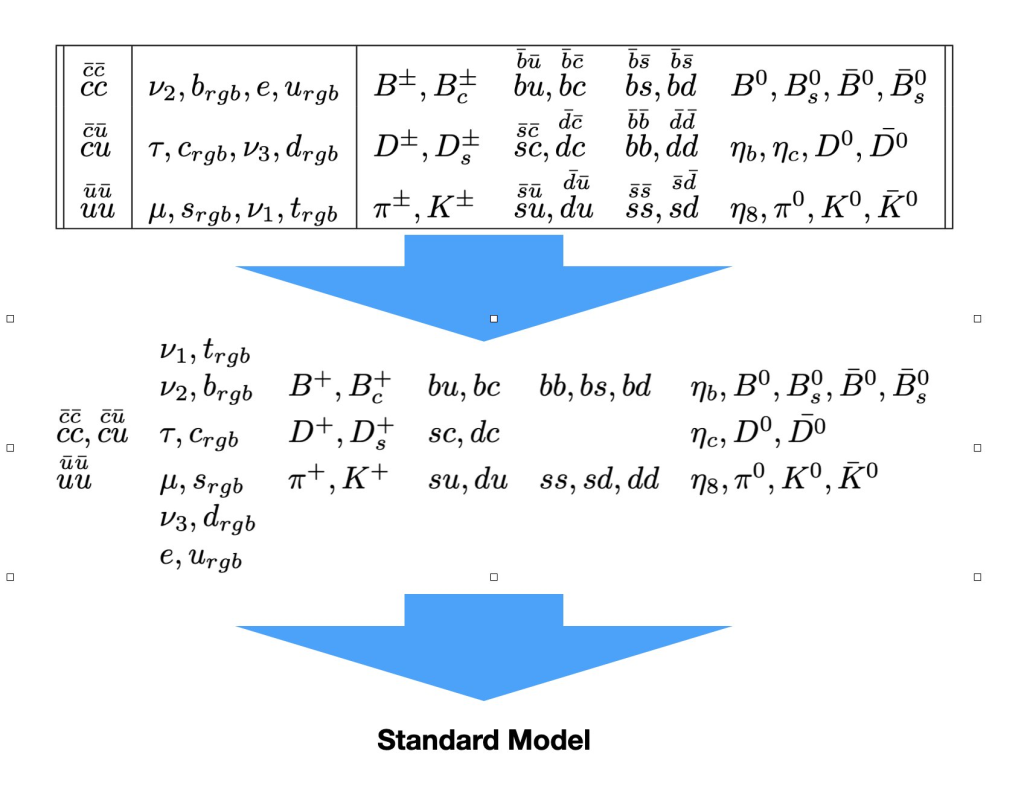Twitter going all-in in speculative physics, it is a good excuse to mention a friend’s blog that is echoing my -now some ten or fifteen years old- speculative ruminations.
Basically it was the idea that string theory was right until, say, 1974…
The papers at that time were still considering supersymmetry between mesons and fermions, or gluons and quarks.
- https://inspirehep.net/literature/68389 Embryonic Dual Model for Pions and Fermions Charles B. Thorn(UC, Berkeley) 1971
- https://inspirehep.net/literature/75918 Dual quark-gluon model of hadrons J.H. Schwarz(Princeton U.) 1971
- https://inspirehep.net/literature/74339 Fermion meson vertices in dual theories Edward Corrigan(Cambridge U., DAMTP and CERN), David I. Olive(Cambridge U., DAMTP and CERN) Oct, 1972
- https://inspirehep.net/literature/97031 A potential approach to spinor quarks Y.M. Cho(Chicago U., EFI) 1974
- https://inspirehep.net/literature/838 An Introduction to the Theory of Dual Models and Strings Joel Scherk(New York U.) Mar, 1974
- https://inspirehep.net/literature/1899 Dual Field Theory of Quarks and Gluons Joel Scherk(Caltech), John H. Schwarz(Caltech) Jan, 1975
- https://inspirehep.net/literature/116121 Models with Quark Confinement and Linear Trajectories Without Parity Doubling S.Y. Chu(UC, Riverside), P. Kaus(UC, Riverside) 1976
Any of these papers could have predicted three and only three generations by asking 1) a split between heavy and light quarks and 2) that gluonic strings only can be terminated by light quarks. This pair of postulates has unique solution within the standard model: 5+1 quarks
In fact the 1975 paper is already going out of sync because it aims for the 10th dimension and then decides that whatever the susy particles are, they are not the ones they have. Nobody notices that the muon and tau have the same mass that corresponding same charge mesons?
So the big dogma is «SUSY is fully broken at the GeV scale» while really we have three susy multiplets only mildly broken. Just happens that the scalars are mesons and diquarks.
Now, about the sBootstrap proposal, which are the problems? Basically:
- 3 extra scalar squarks of charge +4/3. Not six, just three.
- no explanation of why fermions are point like while bosons are extended, at QCD scale.
I can not find a cure for those. More specifically
- We could use each +4/3 scalar and the corresponding anticolour -4/3 scalar to make a fermion, but the fermion is just the opposite than a neutrino is. It has different charge in each component.
But even without a cure, the sBootstrap should made for a nice startpoint in the nuclear or infrared scale, as one could start from three perfect massive supermultiplets, break supersymmetry to have a zero mass level for electron and up, then do second order perturbations plus the neutrino see-saw to recover the actual mass structure. Of course this is not possible in the current conception of the yukawa couplings of the standard model because they are seen as running down from an UV unification.

A consideration here is if the «IR theory» to break is just SU(3)xU(1) or if there are some remnants of electroweak. On one side is very tempting to send W and Z0 to infinity mass. On the other hand, it would be interesting to consider for instance what combinations of charged scalars can decay to neutral scalars, and the same for diquarks. It is very tempting to think that we have b(c+u) and b(c-u), then c(s+d) and c(s-d) and then u(s+d) and u(s-d), so that only one combination can feel the chiral interaction. And it could be related to the problem that all our composites are pseudoscalars, while for susy we need half of them scalars, half pseudoscalars.
Deja una respuesta